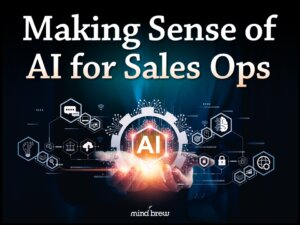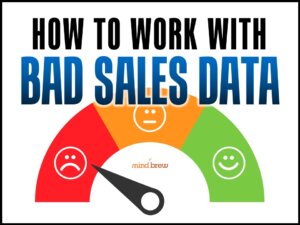Recently, I came across a post where someone had asked one of the popular AI chatbots to solve a classic optimization problem. The problem involved some basic tradeoffs and constraints…nothing too complex…and it had a fairly clear correct answer. Of course, the AI chatbot produced an answer that sounded confident, authoritative, and perfectly reasonable.
The only issue? The answer wasn’t even close to being right!
Now, it doesn’t really matter which AI chatbot was being used, because they all would’ve done about the same thing. The simple truth is that the Large Language Models behind the AI chatbots that are getting so much attention these days just aren’t built for doing that kind of work. They aren’t mathematical engines or optimization solvers. They’re not doing calculus, running regressions, or executing multiple tradeoff simulations under the hood.
Yes, these Large Language Models (LLMs) are indeed predictive models. But they’re designed to predict language…words…and not mathematical results. And when you think about how much of what we do in Sales Operations depends on logic, data, and math…well, that distinction is pretty darned important!
When you ask an LLM to optimize a sales territory plan, rebalance quotas, predict conversion rates, or estimate pipeline yield, it’s not actually doing any calculations. It’s just predicting what a smart-sounding answer to that type of question might look like, based on the billions of words it’s read before. Rather than trying to compute the most accurate number, it’s trying to predict the most likely words a response might contain.
That’s why even wildly incorrect answers will often sound highly plausible, logical, credible, and authoritative. After all, the LLM is designed to predict the most logical and credible words. But that’s not a bug. These LLM-based chatbots aren’t broken. No, they’re actually working exactly as intended. It’s just not the right kind of AI tool for that kind of problem.
And this is where so much of the current confusion comes in…
As we discuss in the Making Sense of AI for Sales Operations training session, the term “AI” is being used to describe a wide range of technologies that are very different. A Large Language Model is a linguistics engine designed to understand, manipulate, and generate language. In sharp contrast, a forecasting or optimization model is mathematical and designed to evaluate tradeoffs, run scenarios, and calculate the best answers to satisfy a defined set of objectives.
While both are “AI” in the broadest sense, they are designed to do very different things, and expecting one to do the other’s job is a recipe for disaster.
Now, that doesn’t mean LLMs have no place in Sales Ops. In fact, they can be incredibly useful as translators, facilitators, and automation engines. A well-configured LLM-based workflow or agent can pull data from CRM or ERP systems, summarize patterns, draft executive updates, interpret forecast reports, and even explain complex model outputs in plain English for sales leaders.
That’s really powerful stuff!
But the key phrase here is “well-configured.” An LLM won’t automatically know which optimization engine or analytical model to call or when to call it. You’ll have to tell it through the workflow you design. Without that direction, the LLM will just try to sound like it knows the correct answer. And as everyone knows…or should know…sounding right is not actually the same as being right.
While the hype around Generative AI and LLMs makes it seem like our analytical and operational problems are about to vanish, the truth is that a lot of what we do in Sales Ops still depends on quantitative logic and rigor. When we’re optimizing coverage, identifying organic growth opportunities, modeling incentive comp plans, forecasting revenue, or estimating pipeline yield, we need models that compute.
We need math-driven AI, not word-driven AI.
So the smart move is to use each type of AI for what it does best. Use the language models to synthesize insights from text, summarize sales feedback, automate reporting, manage repetitive workflows, or help communicate recommendations in plain English. Use the mathematical and statistical models to do the heavy lifting around robust analysis, simulation, forecasting, and optimization.
And wherever appropriate, of course we’ll connect them together. We just don’t want to confuse them. Because when we mix up “talking about the problem” and “sounding right” with actually “solving the problem” and “being right,” things can get ugly or go sideways really fast.














